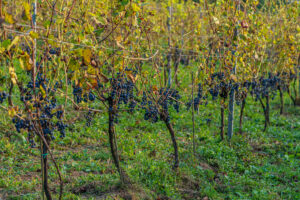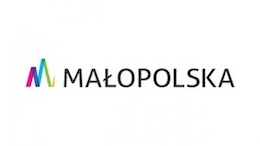Małopolska is a unique region where you can find not only everyone will find something for themselves, from unique world-wide treasures of culture and heritage and breathtaking landscapes, to a unique offer of active tourism, unique cultural events and excellent cuisine.
The Tarnów region, especially the Foothills, is a particularly vulnerable area for viticulture. Since 2012, the Great Tarnów Dionysions have been organized here every year. Visiting one of the dozens of vineyards you can get acquainted with sommelier art, taste wines and learn how to choose the right wine for dishes. The vineyards located in the area of cycling trails are m.in. Zadora, Dabrówka, Janowice, Uroczysko, Rubinowa.






Zakliczyński raspberry juice has traditionally been made for more than 25 years. Its taste is mainly influenced by the harvesting of raspberries from small domestic crops from the Dunajec Valley, grown without the use of chemicals. Raspberries are harvested by hand after dew has dried on a sunny day, which is important for the quality of the juice and causes the juice to retain the scent of fresh raspberries. The finished juice is tasty and fragrant, with a very intensely burgundy color. It has been used for years for colds, and is also added to tea and various sweet desserts.
The "Beautiful Hansel" beans from the Dunajec Valley have been a vegetable on the list of traditional products since 2006. Its seeds are smooth, well filled, uniform in shape. They are characterized by an exceptionally high magnesium content! Beautiful Hansel is grown only in 11 municipalities in Poland, precisely in the Dunajec Valley region. The environmental conditions there are extremely beneficial for this variety of beans – there are no sharp temperature spikes, and crops are not exposed to strong winds.
Pickled cucumbers in the well – this is a traditional dish of Zakliczyńska cuisine. The method of preparing them was quite unique, because barrels with cucumbers seasoned with spices (horseradish, dill, garlic and salt), were flooded with water and closed, and then allowed into the well. In this way, a constant silage temperature was achieved and its process was gently delayed, while obtaining a specific taste and aroma.
Strząska is a unique dish, prepared only in one Lesser Poland village – Siedliszowice, gm. Frog, which was invented by an anonymous hostess a hundred years ago.Once it was ate only once a year as the main dish of Easter breakfast. Ingredients can be found in any saint – chopped cold cuts (preferably homemade sausage), hard-boiled eggs and grated horseradish with spices, and the whole was flooded with water with vinegar. This dish was included in the list of traditional products of the Ministry of Agriculture and Rural Development, having already won several prizes in competitions for the best local dishes. Today, the inhabitants of Siedliszowice eat shreds all year round.
"Siuśbak – groats with peas" is a traditional dish known as early as the 19th century, which is derived from the former rural cuisine in Wola Rzędzińska, (gm. Tarnów). It was a daily dish, drawn up several times a month, most often in the summer time. It was eaten most often for dinner, but also, as it is a syta and high in calories, during heavier agricultural and farm work. It consists of two basic components: barley porridge – chut should beans and various species of beans, called "colored peas", enriched with spices and okrasa. Most of the products needed for the preparation of this dish come from the farms of the inhabitants of Wola Rzędzińska – a village with developed agricultural and breeding traditions continued to this day. This dish received an award as the Best Product of the Tarnowska Land, in the category of "food product – regional dish" and awarded at the district dożynka in Radłowo in 2013.
Tuchowska sausage and tuchowska country sausage, which for 100 years has been produced by the Sajdaków family. The product was placed on the "List of traditional products of the Ministry of Agriculture and Rural Development". The village sausage was made immediately after slaughter, when the meat was still warm, so that it was obtained in a cross-section gray eyelet, with a pink border. For better deliciousness and durability, tuchowska sausage is smoked twice – in a traditional smokehouse fired with beech or alder wood, and finally cooled. A few years ago, the Tuchowski Society of Private Entrepreneurs awarded the Sajdaków family with a commemorative medal for maintaining the tradition of making and tasting Tuchów sausage and creative contribution to the development of crafts and trade.
Gomółki kowalowskie – (gm. Blocks) – these are small, oval cheese nuggets with an uneven surface. Their name is confirmed in 16th-century sources and is included in the list of traditional products of Malopolska, and means spindle-shaped or spherical nuggets of cheese made by hand.
For a closer look at the culinary qualities of the region, it is worth visiting the Local Product Center in Rzuchowa. It is a place for the widely understood promotion of local products, folk traditions, crafts and crafts from the territory of Malopolska. Numerous workshops are organized here, e.g. Embroidery, decoupage, tissue paper, folk art painting, etc. In the CPL building there is also a shop with local products, among m.in. honeys, fresh and organic fruits and vegetables from local producers.
Jamna "Chatka włóczykija" and "Gajówka Jamna" are also worth visiting.





